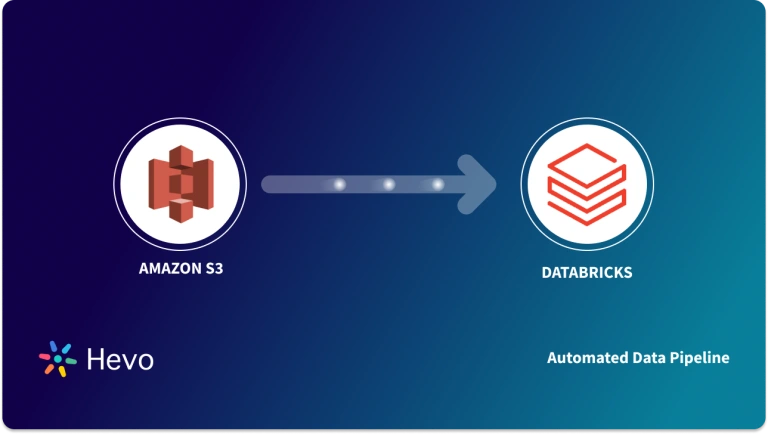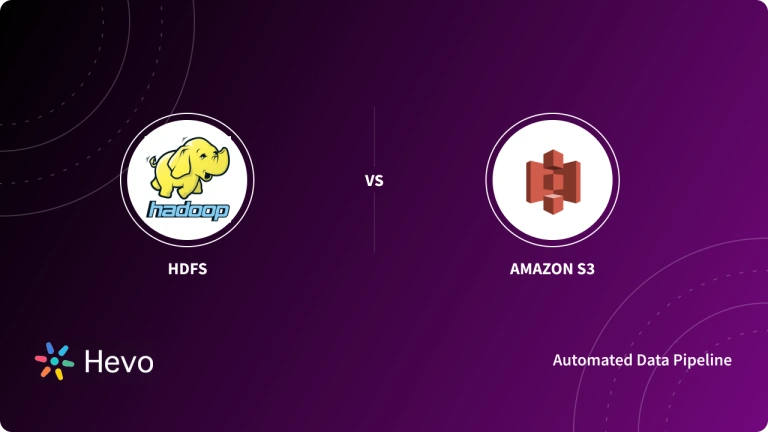AWS S3 Replication is an essential skill to have up your sleeve when working with S3. Amazon also offers a service called Redshift spectrum that allows users to query data existing in S3 by making use of the Redshift infrastructure. This means S3 can even be used as a complete Data Warehouse service.
- S3 pricing mainly contains 4 components: Data Storage charges, Requests, and Data Retrieval charges, Data Transfer, and Replication charges.
- Enterprise compliance policies and use case-specific scenarios often lead to the requirement of Replicating S3 to various destinations.
Table of Contents
Introduction to AWS S3

Amazon S3 is Amazon’s cloud-based data storage platform, It has strong integration capabilities, allowing customers to easily combine it with a variety of ETL tools to manage their data needs.
As a highly scalable data lake, Amazon S3 is a critical component for modern data architectures, facilitating the export of table data and serving as a staging area to load that data into powerful platforms like Redshift, Snowflake, and BigQuery for analytics, or into Elasticsearch for full-text search.
- Users can also use the Amazon S3 console or the Amazon S3 CLI to easily add, alter, view, and manipulate data in their Amazon S3 buckets.
- It includes support for a variety of computer languages, including Python, Java, Scala, and others, as well as a number of APIs, allowing users to securely manage, backup, and version their data.
Are you looking for ways to connect your cloud storage tools like Amazon S3? Hevo has helped customers across 45+ countries connect their cloud storage to migrate data seamlessly. Hevo streamlines the process of migrating data by offering:
- Seamlessly data transfer between Amazon S3 and 150+ other sources.
- Risk management and security framework for cloud-based systems with SOC2 Compliance.
- Always up-to-date data with real-time data sync.
Don’t just take our word for it—try Hevo and experience why industry leaders like Whatfix say,” We’re extremely happy to have Hevo on our side.”
Get Started with Hevo for FreeIntroduction to AWS S3 Replication
Replication helps you to copy data from one S3 bucket automatically without blocking operations. AWS S3 Replication can Replicate data across the different source and destination buckets irrespective of the account or region they belong to. Replication maintains the metadata including the origin and modification details of the source across Replicated instances thereby ensuring any audit trail requirements. The use cases behind the need for Replication include having to keep the same data under different storage classes or different ownership structures.
AWS cross-region Replication helps organizations to adhere to compliance requirements of having to keep data across multiple regions for risk mitigation.
AWS same region Replication is often used to Replicate data across production and test accounts. Some organizations also have data sovereignty compliance requirements that do not allow data to leave the same geographical region.
Methods to Set Up AWS S3 Replication
The AWS S3 Replication process can be easily carried out by using any one of the following methods:
- Method 1: Using Replication Rule for AWS S3 Replication
- Method 2: Using Hevo Data for AWS S3 Replication
Method 1: Using Replication Rule for AWS S3 Replication
Setting up AWS S3 Replication to another S3 bucket can be performed by adding a Replication rule to the source bucket.
- Step 1: Sign in to the AWS S3 management console and choose the name of the bucket you want.
- Step 2: Select Replication in the management section as below. And click Add rule.
- Step 3: We will Replicate the whole bucket in this case. Choose the entire bucket as given below.
- Step 4: The next step is to select the destination. Select buckets in this account using the radio button as below.
- Step 5: If you need to change the storage class of the destination object, do it through the drop-down in destination options as below.
- Step 6: Create a new IAM role for this transfer as below.
- Step 7: Set the status of the Replication rule and click next to create the rule.
As soon as you create the rule with enabled status, the Replication will start working. You can go into your destination bucket after a few minutes and ensure that the Replication is indeed working.
Limitations of AWS S3 Replication using Replication Rule
Now that you have learned how to set up Replication in AWS S3, let us explore some of the real-world challenges that you often find while implementing this.
- S3 Replication is easier to set up when the destination is S3 itself. The dynamics changes when the destination is a separate service inside AWS or another cloud provider. In that case, you will need to write custom modules to accomplish replication.
- The above method has limited ability to apply transformation before Replicating the date. More often than not, this is a real requirement in enterprise Replication scenarios.
- Pricing of Replication when Replication time control is implemented is confusing and complicated.
Method 2: Using Hevo Data for AWS S3 Replication
Hevo Data can complete your AWS S3 Replication process in the following 2 steps:
- Configure AWS S3 as Source for Hevo Data. This is shown in the below image.
- Provide required details based on the type of file CSV, JSON, etc., that you chose while configuring S3 as the source.
That’s it! Hevo will automate your Replication process according to the details that you filled.
Conclusion
- The article includes the process of AWS Replication and its importance.
- Furthermore, it provided 2 methods using which you can set up your AWS S3 Replication.
- Also, the article listed the limitations which are associated with the first method that uses the Replication Rule for the AWS S3 Replication process.
Hevo Data, with its strong integration with 150+ Sources, allows you to not only export data from sources & load data in the destinations. Try a 14-day free trial and experience the feature-rich Hevo suite firsthand. Also, check out our unbeatable pricing to choose the best plan for your organization.
Frequently Asked Questions
1. Can I replicate existing objects in my S3 bucket?
Yes, you can choose to replicate existing objects by enabling replication on your source bucket; however, only objects created after enabling replication will be automatically replicated unless you initiate a manual copy.
2. How can I monitor S3 replication status?
You can monitor the status of S3 replication through Amazon CloudWatch or by simply checking replication metrics and events in the management console of S3.
3. How does S3 replication handle versioning?
If versioning is enabled for both the source and the destination buckets, all versions of the objects are replicated. Otherwise S3 replication replicates the latest version.






